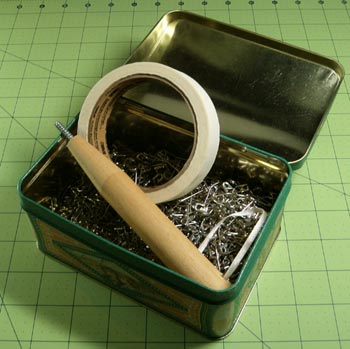This post contains affiliate links for which I receive compensation
Rumpled quilt backing
by Debbie Campbell
(Accokeek, MD)
Debbie asks...
As I'm stitching in the ditch on my forest jellyroll quilt, the backing is shifting even though I have pinned the three layers together.My backing is 100% cotton broadcloth.
I started in the center but as I go along the backing is shifting and becoming rumpled and twisted.
What do I need to do to prevent this from happening?
Do I need to starch the backing first?
Thanks for your help.
Julie replies...
Hi Debbie!I suspect that the problem stems from either not enough basting pins or that the backing fabric wasn't secured adequately in the initial step in basting.
How many safety pins does it take?

That translates to about 4" between pins.
If you planned on a lot of dense quilting (a la pebbles or micro-stippling), my preference is to use even more to manage the 'puff' that invariably occurs.
There are several articles currently on the website that discuss different methods to baste your sandwich. Click any of the links below to read them:
- Layering and Basting a Quilt Sandwich
- How to Use Quilt Basting Spray and Other Tools
- Basting my Quilt (this article also addresses whether your presser foot pressure setting is correct)
Starching the backing fabric...
...makes it easier to move/slide your quilt along the sewing machine bed.If you are not having any problems moving the sandwich, then I don't think it would have much effect on the problems your current situation.
If it is hard to move I suggest either using some sort of quilting glove (my personal favorites are Machingers) or wiping down the bed of your machine with a cloth slightly dampened with cool water and a drop or two of soap.
A couple of other possible cures are mentioned in this article, Quilt Sandwich Sticks to Machine.
It would be nearly impossible to get a good starch job on the back once it is basted. You'd need to iron it and with the safety pins at 4" intervals...well, you get the picture.
But again, I do think the issues stem from either the density of the basting or a backing fabric that wasn't secured taut.
Readers, your thoughts, opinions and experiences are always welcome. Share them using the 'comments' link found below.
Piecefully,
Julie Baird
Editor
Comments for Rumpled quilt backing
|
||
|
||














